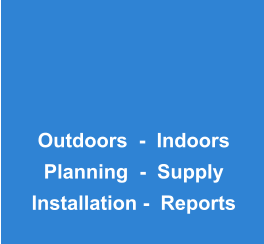





© Linetop Ltd 2021









Why, who and where to count
Begin by asking yourself lots of questions. Why you want visitor data; what is it that you want to evidence; what you might do
differently or continue to do more confidently once you have got it; how long your study will run for; who exactly are the visitors of
interest; what are they doing and where; who is the audience for this visitor research that you are seeking to inform or influence?
Motives for collecting visitor data and sharing results are varied. It might simply be to know how many people are accessing your
land for leisure; to establish the relative popularity of various areas; to discover annual trends or seasonal variations; or even to
reveal day of week or hour of day fluctuations. This can inform property management and funding decisions, including seeking
grant aid and influencing your partners; anticipating erosion from increased usage so as to best target limited resources; to
prioritize and schedule work; to measure the impact of investment or publicity and campaigns. Sometimes data is to be used as
evidence in legal cases such as planning applications which may even be linked to a Public Inquiry.
The exact choice of where to install a counter can have a massive impact on the quality of its results and indeed the life of the
equipment in terms of its durability and immunity to vandalism. It is a mistake first of all to select a particular sensor type and then
think of somewhere to put it. The correct approach is to start by finding a place where the people of interest are behaving in a
consistent way which is amenable to counting, and then go on to identify what kind of sensor is going to work best near there.
Consider also the opportunities to conceal the equipment, if necessary, and places where the enviromental conditions favour
reliable system operation and a long product life. The sections below explore the implications of these insights in more detail.

You count and record “what the visitors do”
People are counted by detecting then recording events. It can be a mistake to put a
counter exactly on a site entrance. Cyclists might wait at a trailhead for their friends,
which risks adding false counts, as in the photo right. It is better to position it further
along the trail when visitors are committed to riding in an organised predictable way,
and where one instance of their ‘usual behaviour pattern’ equals one cyclist. Do not
count cyclists on uphill sections - those not fit enough to ride uphill will get off and
push their bike while others may stop and take a rest, as in the second photo here.
A gate or path immediately adjacent to a cafe or car park is also a bad idea. Children
might play there while their parents are occupied. People might go back to collect
something they have forgotten. So it is best to install the visitor counter further
along the footpath with the people on the move. At the entrance to a building, avoid
having leaflet displays or merchandise for sale nearby which causes people to
congregate, linger or wander back and forth. Break-beam sensors placed very close
to a sliding door, or on an inside wall next to a door that opens outwards only, are
very good since visitors rarely linger while standing exactly on the door threshold.
Infra-red beams are very narrow so their detection zone is quite precise.
In summary, if “what the visitors do” is unpredictable or subject to random repetition
then your visitor data will inevitably reflect those issues. So remember that you are
counting instances of people’s behaviour, not the people per se. Therefore plan the
counter accordingly so that once instance of a fairly predictable behaviour produces
one count which equals one person/car/bike etc crossing over the detection zone.
Find somewhere with fluidly moving traffic
Avoid bench seats and interpretation panels on countryside paths. These are designed to stop people and attract attention - the exact opposite of what is needed. If you can find a place where people walk single file then it will be easier and less expensive to devise an accurate counter. But we can count people accurately when moving side by side too, as in the photo opposite, using two pressure slab sensors buried side by side in the path surface. With optical sensors like break-beams, the nearest person in the sensor’s view will block its view of anyone standing adjacent which then results in those two (or more) people being counted as one person. So, the narrower the path, the better the results wil be, provided the traffic is fluid. The kissing gate in the photo right has a well-hidden body heat sensor in a drilled out stone. Traffic is certainly not fluid, but Linetop loggers can be configured to allow sufficient delay for walkers to pass this obstacle, resulting in one count per person. This also applies to step-over stiles which each person takes a couple of seconds. With driveways or roads, choose a place for the car sensor where the vehicles are moving. So a T-junction at the exit on to a public road, or just before a pay booth or barrier are bad places to find fluid road traffic. With a long driveway, put the car counter half way along it, although Linetop sensors cope well with traffic congestion.Directional counters
It can be cheaper and easier to count cars (or people) moving both ways then halve the total than to try to determine the direction. Directional counters tell you nothing about visitor occupancy time. Just because someone walked in at 10h and then someone left at 11h does not mean that anyone stayed on site for an hour. Knowing the direction of the visitor provides for arrivals-only or departures-only time-of-day profiles, if of interest, plus confirmation of correct operation since over the course of one day the ‘ins’ and the ‘outs’ totals should balance well. Generally, directional counters are used only in special situations, such as to count the ‘ins’ only, and Linetop sells a compact and covert directional body-heat sensor for such purposes.Conceal or secure the counter equipment
People cannot steal or damage equipment that they do not notice, like the sensor drilled into the stone in the wall photo above. Equally important, people behaviour is not altered by things around them that they are unaware of. A counter which is obvious and causes people to stop and examine it is a system that alters the very thing it is trying to measure (normal people flows) and thus it is a badly designed system. However smart a sensor might be, and however long its batteries might last is not going to matter if the visitors stop and fiddle or if they linger nearby to read a notice board, or rest on a bench seat, which causes spurious counts to be added. In some settings, like a street or pavement in a town, you can get away with banding a box on to a street sign or lamp post or bolt it to a stand-alone litter bin. A million people have walked past the grey counter box in the pillar box photo and nobody has damaged it. People are accustomed to seeing so many boxes and equipment in streets that you adding yet another metal box, painted to match the scenery, makes little difference. Concealment is not always a case of making something invisible but instead ensuring that visitors do not notice anything that looks out of place. On paths in open countryside it is usually best to deploy a system that is invisible by burying a pressure sensor in a narrow path or concealing a body heat sensor in a wall, fence, wooden gate, waymarker post, or other structure at the path verge. The data logger in these cases will be housed in a Pelicase and buried nearby in a well- made secret and unfloodable cavity such as in a raised tump covered with grass. In municipal parks and formal gardens, however, it is practical to concrete secure metal pillars in a path verge to accomodate a car or a pedestrian counter. People think these pillars are for mains electricity supply or telephones and leave alone.








VISITOR COUNTERS










